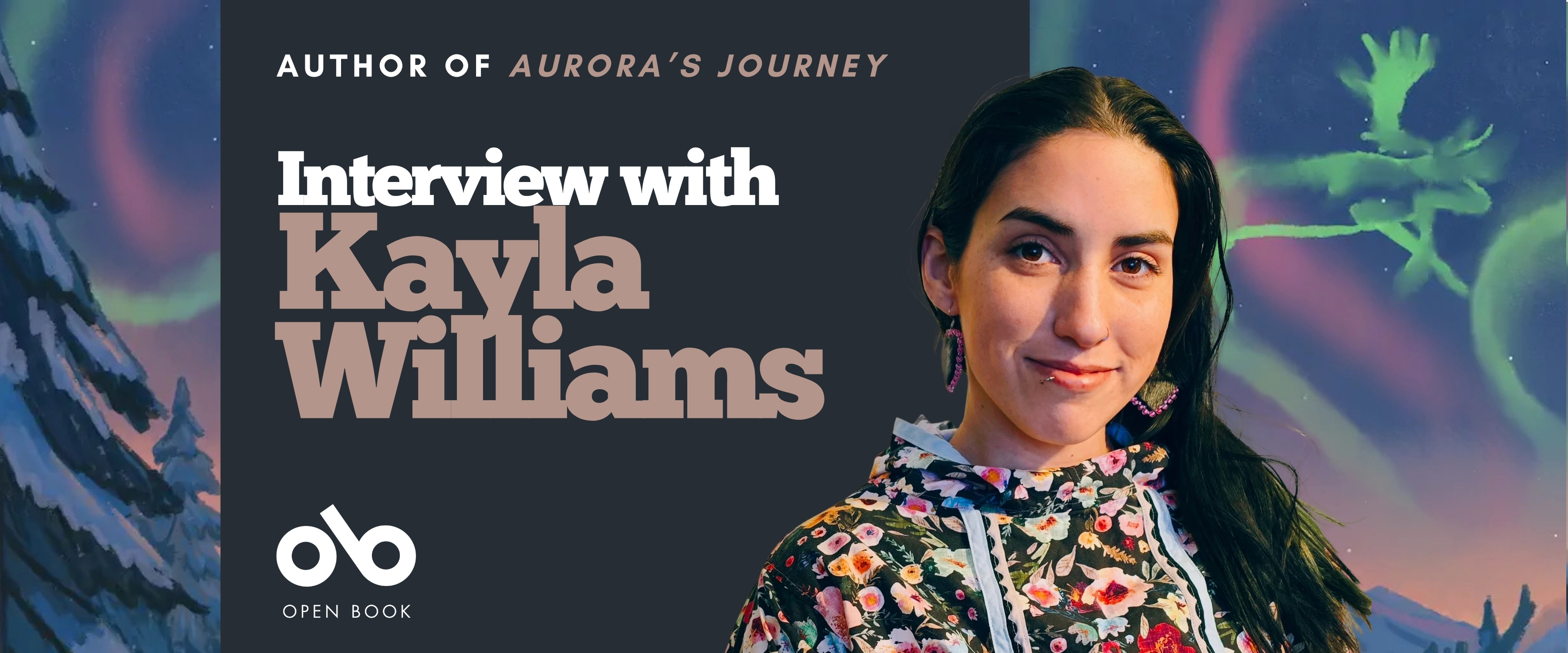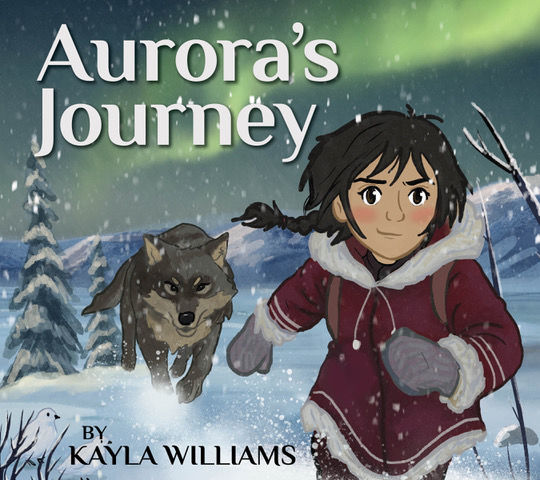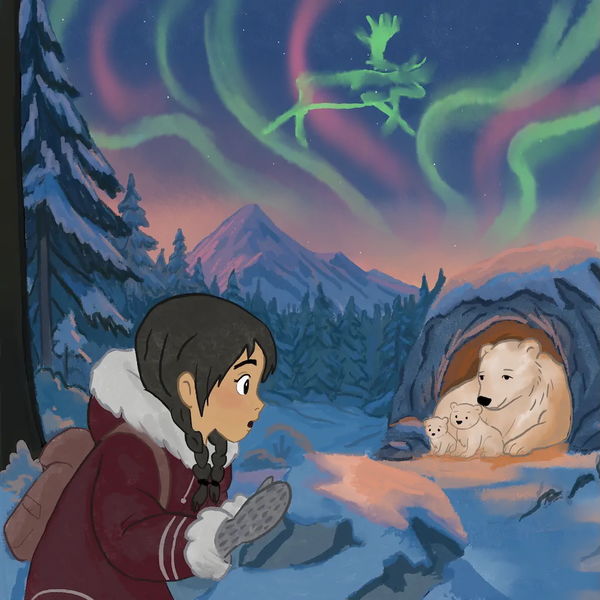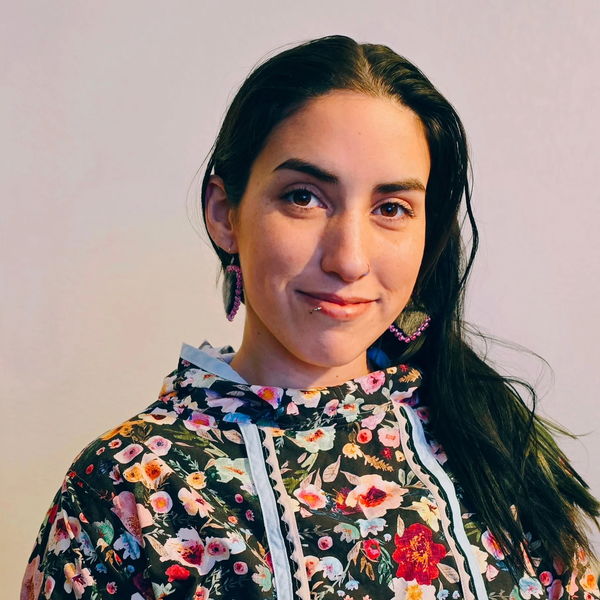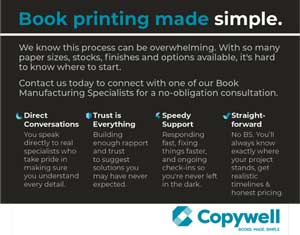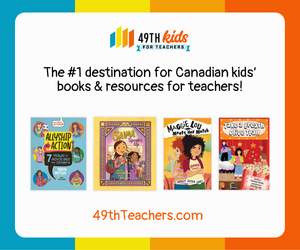Embark on a Stunning Arctic Adventure in AURORA'S JOURNEY by Kayla Williams
This fall a vibrant new voice will be on the literary scene with the release of Aurora's Journey (Kegedonce Press), the debut work from Kayla Williams.
In this exciting new picture book, the author introduces readers to Aurora, a courageous young Inuk girl whose life changes dramatically when her family vanishes during a hunting trip in the Arctic. Determined to bring them home, Aurora ventures into the vast northern wilderness alone.
Her path is filled with challenges, from the harsh realities of the land to the doubts and fears she carries inside. Yet strength and resilience guide her forward, and she discovers an unexpected companion in Mama Nanuk, a polar bear, and her cubs. Together they embody the deep connections between people, animals, and the natural world that sustain Aurora on her quest.
As the latest addition to Kegedonce’s acclaimed list, Aurora's Journey reflects the press’s dedication to championing powerful new Indigenous voices and storytelling traditions. Williams’s debut is a thrilling reminder of how literature can transport, inspire, and transform.
Just a few days in advance of publication, Open Book is delighted to spotlight Aurora's Journey, a book that promises to captivate readers while announcing the arrival of Kayla Williams as an author to watch. Check out our interview with the author right here!
Open Book:
Tell us about your new book and how it came to be.
Kayla Williams:
My new book is called Aurora’s Journey. Originally, I set out to be a children’s book illustrator—I was sending my artwork to publishers across Canada, hoping to illustrate stories for others. One publisher responded and asked if I’d ever consider writing a story to go along with my illustrations. That sparked something in me.
I started with a simple lullaby and soon found myself building a deeper story—something my 9-year-old daughter could enjoy and see herself reflected in. As a mixed Inuk from Labrador, I’ve often noticed the lack of Labrador Inuit representation in children’s literature. I wanted to help change that, even in a small way.
Ironically, the publisher who encouraged me to write never responded after I submitted my stories—but I kept going. I began sharing it with other publishers and ended up getting a wonderful response. That’s how Aurora’s Journey was born.
Your CanLit News
Subscribe to Open Book’s newsletter to get local book events, literary content, writing tips, and more in your inbox
I’m especially thankful that I had the opportunity to illustrate it as well, because this book marks a major milestone in my career—my first publication that I both wrote and illustrated myself. It feels incredibly meaningful to have brought the entire vision to life in my own voice and style.
OB:
Is there a message you hope kids might take away from reading your book?
KW:
Absolutely. At the heart of Aurora’s Journey is the message that the land is always speaking to us—we just have to learn how to listen. Aurora faces challenges in the story, but instead of panicking, she draws on the teachings passed down from her family, especially the wisdom of her father and grandmother.
I want young readers to see that they carry strength within themselves, and that they’re never truly alone. Whether it’s through stories, songs, or quiet moments in nature, our ancestors have left us tools to navigate difficult situations. For Inuit and Indigenous kids especially, I hope this book reminds them that their culture is powerful, and that the land can be both teacher and guide.
OB:
Did the book look the same in the end as you originally envisioned it when you started working, or did it change through the writing process?
KW:
That’s a great question—it changed a lot along the way. One of the biggest influences was the support and feedback I received from my community. As I started writing, I shared early versions of the story with friends and family. Their encouragement—and their stories—really helped shape the direction of the book.
Some of them suggested weaving in traditional teachings passed down from their grandparents, and that pushed me to think more deeply about how cultural knowledge is shared and carried forward. Others encouraged me to include Inuktitut translations, and while I didn’t include as many as they hoped (since I’m still learning and not yet a confident speaker), that’s something I’d love to grow into for future projects.
In the end, the story became much more layered and meaningful than what I first imagined—and that’s thanks to the people around me.
OB:
Is there a character in your book that you relate to? If so, in what ways are you similar to your character and in what ways are you different?
KW:
I definitely see a lot of myself in Aurora. Like her, I’ve often had to rely on my own inner strength to navigate uncertainty. She’s curious, brave, and a little stubborn—all qualities I recognize in myself, especially when I was her age. Aurora listens closely to her elders’ teachings and carries them with her, which reflects how I’ve learned to hold onto the stories and wisdom shared by my own family and community.
Where we differ is that Aurora is growing up in a more traditional northern setting, while I was raised in a mix of worlds—both urban and rural, Inuit and non-Inuit. Her journey through the wilderness is symbolic of a deeper emotional journey I’ve also taken, and continue to take, as I reconnect with culture, identity, and belonging.
In many ways, writing Aurora’s story helped me reconnect with parts of myself I hadn’t fully explored before.
OB:
What’s your favourite part of the life cycle of a book? The inspiration, writing the first draft, revision, the editorial relationship, promotion and discussing the book, or something else altogether? What’s the toughest part?
KW:
My favourite part is definitely the beginning. I’m a very creative person, and I constantly feel surrounded—and almost overwhelmed—by inspiration. It builds up inside me like pressure, and starting a new project feels like releasing all that energy in the most beautiful way. Watching an idea take shape and come to life is a bit like raising a child—it grows, finds its own rhythm, and develops its own heartbeat. I’m just here to guide it and help it become what it’s meant to be.
The toughest part, for me, has been working through the inner turmoil of being a mixed Indigenous person. There have been moments where I’ve questioned whether I have the right to tell stories rooted in my culture. That feeling of “not being enough” can be heavy. But over time, and through many conversations with family and members of my community, I’ve come to realize that I do belong—and that our stories need to be told by those who carry them in their hearts. Especially when so many non-Indigenous authors continue to profit from telling our stories, I’ve learned that reclaiming space as a storyteller is not just valid—it’s necessary.
OB:
What are you working on now?
KW:
Right now, I’m preparing new work for the next publishing submission period, and I’m really excited about what’s coming. I have another book being released later this year called Labrador Skies, so I’m in the middle of planning book launches and getting everything ready for both of my upcoming releases.
Looking ahead, I’m always dreaming big. One of my biggest hopes is to see one of my stories adapted into a movie or animated series one day—something that brings Indigenous stories and characters to the screen in a way that feels authentic and magical. Who knows? We’ll see what happens!
___________________________________________
Kayla Williams is a mixed-heritage artist born in Goose Bay, Labrador, who has a strong connection to her Inuk roots. She cherishes her family's ties to Makkovik and Rigolet in Nunatsiavut, along with her Scottish and French ancestry. Growing up, she spent her summers in Cartwright with her grandmother, deeply immersing herself in the rich culture and community of Labrador. A self-taught artist since childhood, Kayla runs her own business, Big Land Design, where she channels her passion for art into various creative outlets. She illustrates and writes children's books, aiming to ensure that Labrador Indigenous children see themselves represented in literature. Additionally, she paints public murals throughout her community, contributing to its vibrant cultural landscape. As a devoted mother to her two children, Lilian and Samuel, Kayla is committed to inspiring them and other young dreamers to embrace their heritage and pursue their aspirations.
